Many gardeners dream of growing a large variety of different crops on their plots. Exotic fruits include figs. It has an unusual taste and a large number of useful properties.. The only disadvantage is the heat-loving nature of the plant. Let's talk more about growing figs at home.
Table of contents
Growing figs in different climatic conditions of Russia and Ukraine
The fig does not tolerate cold weather and it is possible to grow this plant fully and carefree only in the southern regions with a subtropical climate and air temperature not lower 20 degrees.
There are also several ways in which figs can be grown in the central zone of Russia and Moscow region:
- in greenhouses;
- at home, as a houseplant;
- when planting plants in open ground, it must be carefully covered for the winter.
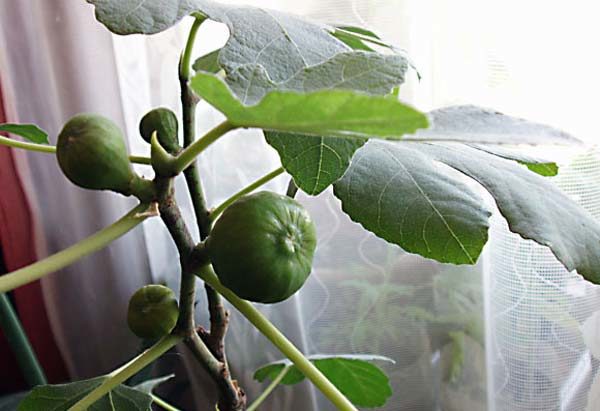
If the fig grows at home, it is recommended for spring and summer prikopat it right with a pot in the ground in the garden, and in the autumn to transfer back to the room.
Winter shelter for figs growing in the open field should look like this:
- make foam box thick 10 centimeterswhile its length is on average 1 meter, and the width and depth of 50 centimeters;
- the structure is fixed with adhesive tape, and put up extra protection in the form of an old door or window frame;
- as soon as the snow falls, they can fill the box;
- May shelter completely removed or instead of the top cover, the surface is covered with plastic wrap, leaving a small gap for air circulation.
The fig is a very capricious crop and it can only be fully grown in hot areas. But with a strong desire, this exotic fruit can be obtained in the central part of Russia, the Krasnodar Territory and Ukraine.
Landing time
Considering that figs are very fond of heat, they should be planted only in the spring, so that they can take root before the first cold weather, otherwise the plant will die. Experienced gardeners highlight the exact time of planting, namely March 15-30, immediately after the start of warming and melting snow.
Requirements for the land plot
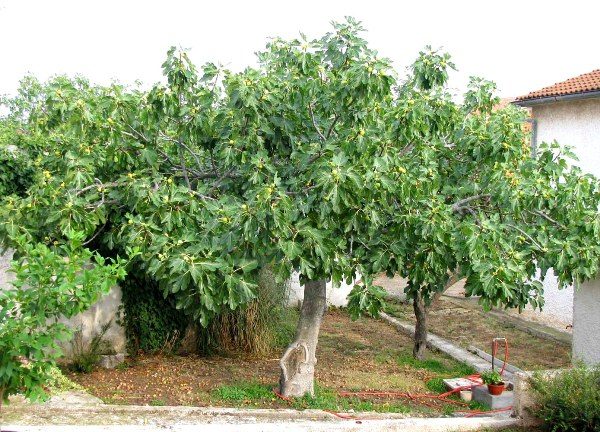
Choosing a place for planting figs should take into account all the features of the plant.:
- Place must be warm and bright;
- The best thing avoid drafts and gusting winds;
- Experienced gardeners recommend locate the tree on the south side in relation to a house, fence or other construction;
- Ground water level must be no higher than 3 meters;
- The plot must be flat, small slope allowed;
- In no case do not plant figs in the lowlands.
Since such a tree does not impose special requirements on the quality of the land, you must dig a hole and fill it with a mixture of:
- top fertile soil layer;
- leafy ground;
- humus;
- sand.
All ingredients are taken in equal proportions. Also in the excavated land, you can add a special soil mixture for lemon or rose..
Outdoor Planting Rules
Sapling can be obtained in several ways.:
- buy in a store or nursery;
- grow out of the stone;
- propagate by cuttings.
To get a seedling by grafting it is necessary:
- In the end of January cut cuttings long 10-15 centimeters with 3-4 buds and dry the cut place for about 7-8 hours;
- At the bottom of the cutting, several cuts are made and dredge into river sand on 2-4 centimeters;
- Then their plenty of water and cover the jar;
- Also instead of sand you can put the cuttings in the water.
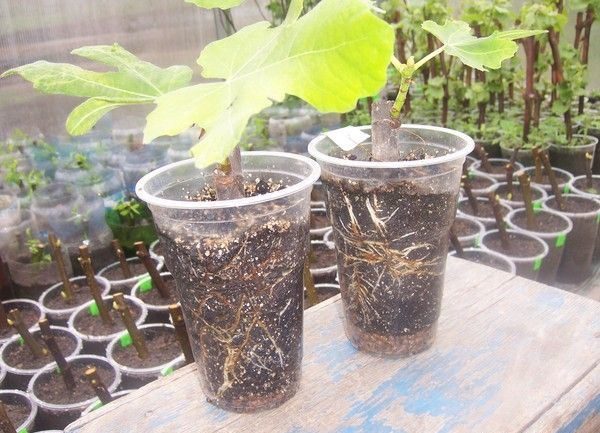
And to get a plant from the stone, you must perform the following steps:
- Seed washed and thoroughly dried;
- In early spring prepare soil mixture from sand, leafy soil and peat and deepen seeds into it by 2-3 centimeters, after which the soil is watered;
- Capacity with seedlings must be covered to create a greenhouse effect;
- When shoots start take cover, first for an hour, then increase the time.
As soon as the seedlings, regardless of how they were obtained (by cutting or from a stone), grow their roots in pots with a special soil mixture consisting of leaf humus, peat, turf and river sand. As the requirements of the plant it is necessary to move it to a larger volume.
Saplings over 2 years old can be planted in the garden in the open ground. There are 2 methods of conducting such work.
Landing in the pits
- Digging holes the depth and diameter of which must be equal 1 meter;
- To the bottom lay out 30 centimeter layer of broken brick, and the walls are covered with whole stones. This design will ensure good circulation of moisture and protect the roots from freezing;
- Part of the soil mixture is laid on the bottom of the pit, then there put seedlings;
- Young trees are gently covered with earthtamped, watered and mulched.
Trenching
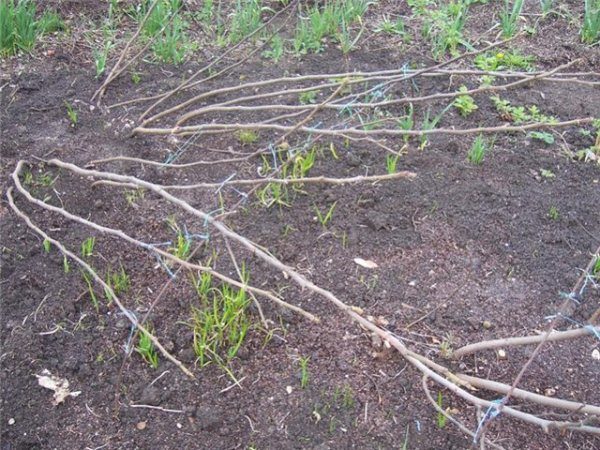
This option is best suited for growing figs in the form of shrubs. To perform this landing is necessary:
- The trench length is calculated based on the number of seedlings width must be equal 70 centimeters, and depth is 90-100 centimeters;
- A layer of crushed stones is placed on the bottom., and bricks or stones are inserted into the walls;
- Then a previously prepared soil mixture is poured into the trench and make holes for plants;
- Near the landing site set pegs;
- Seedlings placed under the slope, to make the plant easier to cover for the winter;
- Then trenches are covered with earthtamped, watered and mulched.
Care for figs at home
It is necessary to water a tree in such a way that the tree trunk circle is always hydrated. During the period of active fruiting, the amount of introduced moisture is reduced. The same goes for the winter season.
In the autumn figs require phosphorus-potassium fertilizers. Early spring it is best to use special complex feeding, in summer the tree will be sufficiently constant mulching of the soil with humus or other organic substances.
In the first years of life, figs need support, which is constructed from an ordinary peg or trellis.
In spring, experienced gardeners recommend removing all frozen and diseased branches. Also it is desirable to carry out trimming, during which the following actions are carried out:
- leave only 2 healthy growth buds, the rest of the shoots pinch;
- in late spring the branches so that the distance between them was about 10-20 centimeters.
In the autumn do sanitary pruning, during which diseased and dry branches are removed.
Also in the process of care necessarily includes plant protection in the winter.
In order for a fig to give a good harvest, it must be protected from various diseases and pests. Usually the plant is attacked by a fig fire, a fig leaf cover and a fig aphid.. As for diseases, most often on a fig it is possible to observe anthracnose or gray rot.
Preventive measures:
- in late March you need to get rid of insects and various bacteria that hibernated in the tree; for this, the tree is treated with an emulsion of mineral oils;
- get rid of affected branches immediately and be sure to burn to avoid the spread of the disease;
- at the beginning of August wood is treated with fungicides;
- if signs of insects do appear, the most effective method is considered spraying preparationscontaining copper in its composition.
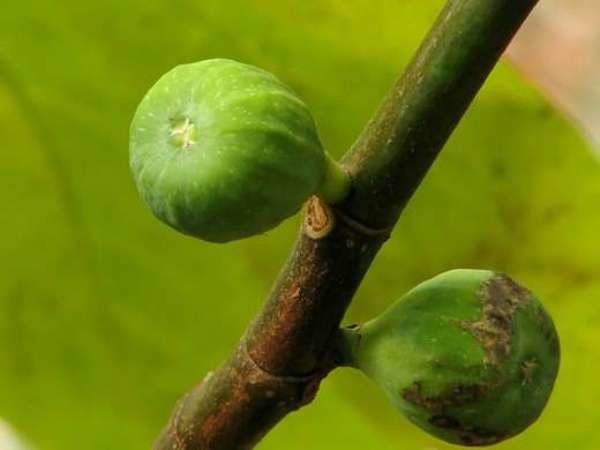
Figs are very tasty and healthy fruit, which, unfortunately, can grow only in warm climates, in other localities, it will be necessary to take great care of this crop so that it will begin to bear fruit.It is necessary to take care of his shelter and create the most comfortable temperature and humidity.
